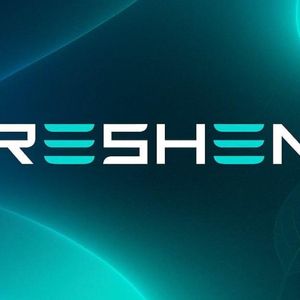
In an economy increasingly shaped by transparency and measurable environmental outcomes, Preshent ’s PRSH Finance represents an evolving model that ties financial performance directly to verified sustainability impact. Developed within the company’s intelligent sustainability framework, it anchors Preshent’s broader ecosystem by using blockchain technology to connect digital finance, infrastructure development, and environmental accountability. At the center of this model lies the PRSH token, the functional unit within Preshent Finance. Rather than existing as a speculative digital asset, PRSH is designed to circulate capital through projects with tangible results—renewable energy expansion, carbon reduction, and verified community benefits. Its mechanisms for staking, decentralized governance, and incentive distribution are directly linked to measurable data, reinforcing a feedback loop between economic growth and environmental progress. The technological foundation enabling this system is Preshent OS, a digital infrastructure that unifies data, intelligence, and finance. Built on a combination of cloud, blockchain, and energy frameworks, Preshent OS ensures interoperability and transparency across applications. Within this environment, the PRSH token operates as a transactional and governance layer—its movement, staking outcomes, and impact metrics all recorded on verifiable ledgers. This integration allows stakeholders to track sustainability claims in real time, reducing the risk of “greenwashing” and establishing an auditable trail of accountability. One of the most visible applications of the model is in renewable infrastructure partnerships with Tribal Nations across the Rio Grande Valley and Southern Rockies. These community-led projects demonstrate how tokenized finance can merge local empowerment with decentralized energy systems. By embedding PRSH into these programs, Preshent enables communities to access financial mechanisms typically limited to large institutional investors while retaining local governance and benefit distribution. Industry observers recognize PRSH as part of a growing impact-token movement, in which blockchain serves dual roles as a funding instrument and a verification system. Analysts note that this approach could democratize sustainability finance by providing a transparent structure for both contributors and beneficiaries. However, they also emphasize that governance design, interoperability, and accessibility will determine whether such systems achieve scale and resilience. What differentiates PRSH Finance is its integration of verified data rather than symbolic pledges. Each transaction and reward is linked to independently measurable outcomes, recorded within the Preshent OS framework. This alignment between technology and governance represents an early prototype for how financial ecosystems might evolve under increasing demands for ESG accountability. Looking forward, PRSH Finance aims to expand beyond regional projects to support a global network of tokenized sustainability initiatives, potentially interfacing with systems like Tesla Powerwall, Ethereum, and Base for broader interoperability. The ambition is to create an economy where value flows not merely through markets but through verifiable environmental performance. By embedding financial activity within transparent, data-driven architecture, PRSH Finance illustrates how capital can operate as both an economic and ecological engine. While still at a formative stage, it stands as an example of how blockchain, governance, and sustainability can converge to create a measurable, accountable financial ecosystem for the future. Disclaimer: This article is provided for informational purposes only. It is not offered or intended to be used as legal, tax, investment, financial, or other advice.
